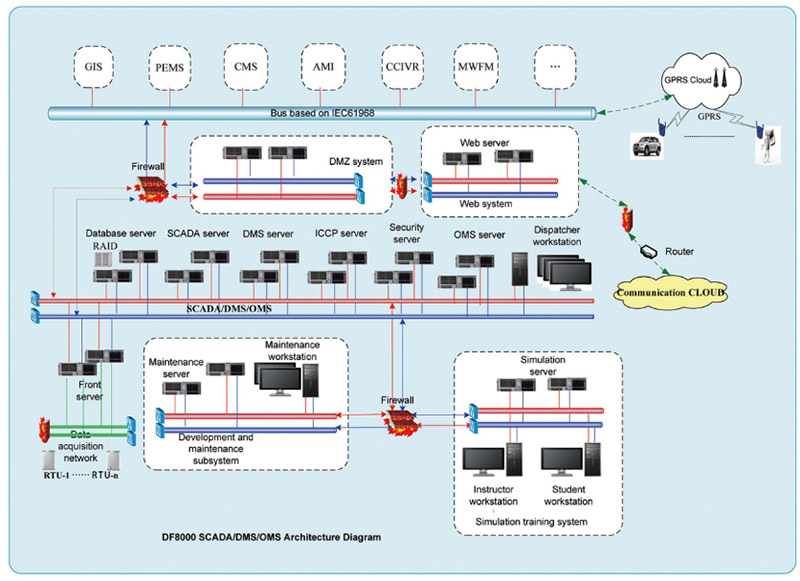- About Us
- News CenterNews Center
- System SolutionsSystem Solutions
- Product Center
- Typical Cases
- Contact UsContact Us
DF8000 SCADA/DMS/OMS advanced distribution management system is designed for the smart power grid. It is based on real-time application, centered on distribution network operation and management, focusing on the business process of distribution network, integrating data acquisition, real-time monitoring, fault processing, application analysis and production management, and enabling the full automation of distribution network monitoring and dispatching, production, operation and service. With the integrated solutions for power supply enterprises, their operation and management level of power distribution network are effectively increased, and their power supply reliability and customer satisfaction are improved.

•Based on IEC62351 and NERC cyber security standards.
•Based on SOA architecture, following IEC61970/IEC61968 standards, supporting the integration with smart substations through IEC61850, and supporting unified graphic, model and database integration modeling of transmission network and distribution network.
•Based on distributed acquisition and monitoring technology, supporting massive RTU/FTU/DTU/FPI and terminal devices access.
•Integrated design based on the ESB (Enterprise Information Bus), enabling interacting with any third-party system in data and work flow through standard interfaces or adapters.
•Based on topology, real-time information and trouble call information from customers, enabling the comprehensive fault diagnosis, fault location and fault analysis.
•Fault processing based on business process and enabling fault location, fault isolation, fault restoration, personnel dispatch, work-order management, etc.
•Supporting the mixed hardware and operating systems, i.e. ensuring system security, usability and scalability while fully protecting customer investment.
•Powerful protocol library technology and enabling quickly accessing to various standard protocols, and rapidly customizing and developing non-standard protocols.
•The network platform is based on the distributed application trigger mechanism, enabling the free deployment and free migration of services, and, under extreme conditions, achieving all system functions with only one server.
•Achieving seamless integration and interaction with GIS system.
•Supporting the integration with microgrid and new energy, such as solar energy and wind energy.
| Application | Main functions |
|---|---|
| Real-time monitoring and analysis | Data acquisition, storage and retrieve |
| Real-time monitoring and intelligent alarm | |
| Data modeling and data mining | |
| Report, remote maintenance and WEB | |
| Distribution network analysis and optimization | Network topology , state estimation |
| Power flow , short circuit analysis | |
| Network reconstruction , security analysis | |
| Sensitivity analysis , AVC | |
| Load shedding , FLISR(Fault location, isolation and system restoration) | |
| Switching scheduling, load distribution and transferring | |
| Statistics and analysis of network loss | |
| Power outage management | Customer trouble call management, intelligent fault diagnosis |
| Mobile operation management, resource management, team management, work order management, situation monitoring | |
| Customer self-service, IEEE reliability index analysis, business intelligence analysis(BI) | |
| Training simulation | Steady-state simulation |
| Dynamic simulation | |
| Dispatcher training | |
| Evaluation of training results |